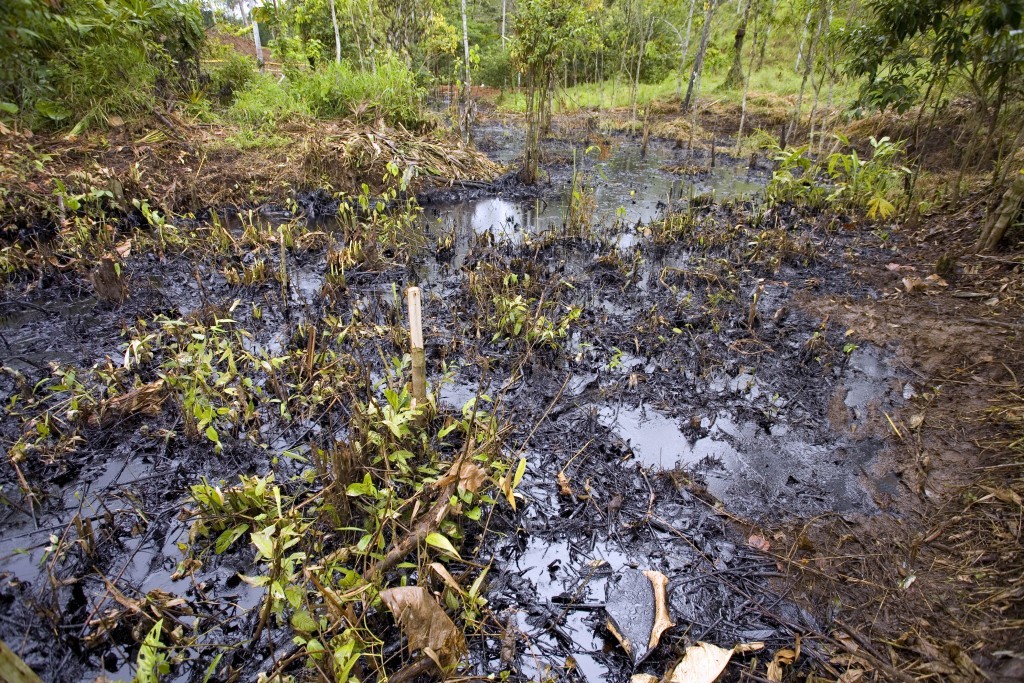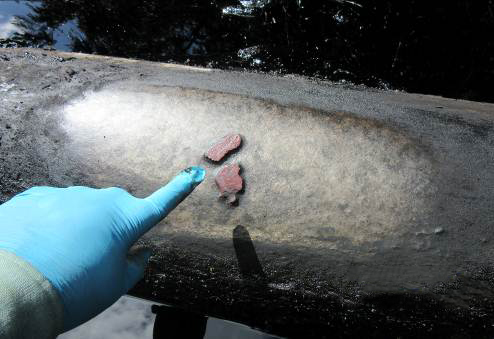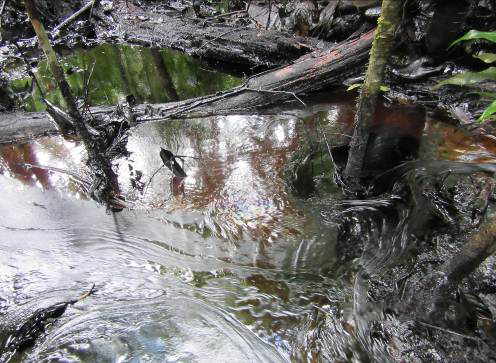Peruvian Oil Spill Prompts Water Emergency for Thousands
ENVIRONMENT, 22 Feb 2016
Alejandro Davila Fragoso – Think Progress
19 Feb 2016 – Thousands of residents in the northern Peruvian jungle are facing a water quality emergency following two pipeline ruptures that spilled crude oil into various waterways — including a tributary of the Amazon River — damaging a vast area known for its ecological value.
Peru’s General Directorate of Environmental Health issued the water quality emergency Wednesday, more than three weeks after the first rupture was reported on January 25. The second spill, which came from a different section of the same pipeline, took place on February 3, further extending plumes of oil and affecting the livelihood of communities that rely on fishing and agriculture.
“Fish have died, crocodiles have died, plants have died,” said one female resident to a Peruvian television station. “How are we going to live,” added the resident, who was not identified in the footage.
At least 2,000 barrels of oil were spilled in the regions of Amazonas and Loreto, though 90 percent of the spillage has been recovered, Peruvian President Ollanta Humala said this week, according to published reports.
The state-owned Petro-Perú operates the pipelines, and the government said it will nonetheless fine the company. So far the company will pay about $3.5 million in fines. It took Petro-Perú some three days to control the ruptures, and the company reportedly used child labor to do recovery work.
Heavy rains have since overrun the barriers used to keep some of the recovered oil in place, all while nearby communities are reportedly experiencing health effects stemming from strong oil odors. “People in the communities are suffering from dizziness and vomit because of the obnoxious smells,” said Edwin Montenegro, president of the Regional Organization of Indigenous Peoples of the Northern Amazon of Peru, to El Comercio late last week.
Meanwhile, regional officials have denounced the clean-up operation as inefficient and have sent delegates to the capital, Lima, to push for action. “The rains have dragged the spillage elsewhere; it is now in the Chiriaco River and also in the Marañon [River],” said Luciana Dekentai, president of the Central Organization of Communities in the High Maranon, to La Republica this week. The Marañon River is the principal source of the Amazon River, one of the longest rivers in the world.
This is just the latest of a long series of spills in the oil-rich jungle of Peru. A review of published reports shows that there have been at least 11 oil spills in the area since 2010. A comparable spill from June 2014 saw 3,000 barrels of oil spilled from another Petro-Perú pipeline, a disaster that affected 20,000 families, according to El Comercio.
Peruvian officials estimate that it will take a year to restore damaged wildlife, and blame ruptures on the 42-year-old pipeline’s age and state of disrepair.
Go to Original – thinkprogress.org
DISCLAIMER: The statements, views and opinions expressed in pieces republished here are solely those of the authors and do not necessarily represent those of TMS. In accordance with title 17 U.S.C. section 107, this material is distributed without profit to those who have expressed a prior interest in receiving the included information for research and educational purposes. TMS has no affiliation whatsoever with the originator of this article nor is TMS endorsed or sponsored by the originator. “GO TO ORIGINAL” links are provided as a convenience to our readers and allow for verification of authenticity. However, as originating pages are often updated by their originating host sites, the versions posted may not match the versions our readers view when clicking the “GO TO ORIGINAL” links. This site contains copyrighted material the use of which has not always been specifically authorized by the copyright owner. We are making such material available in our efforts to advance understanding of environmental, political, human rights, economic, democracy, scientific, and social justice issues, etc. We believe this constitutes a ‘fair use’ of any such copyrighted material as provided for in section 107 of the US Copyright Law. In accordance with Title 17 U.S.C. Section 107, the material on this site is distributed without profit to those who have expressed a prior interest in receiving the included information for research and educational purposes. For more information go to: http://www.law.cornell.edu/uscode/17/107.shtml. If you wish to use copyrighted material from this site for purposes of your own that go beyond ‘fair use’, you must obtain permission from the copyright owner.


